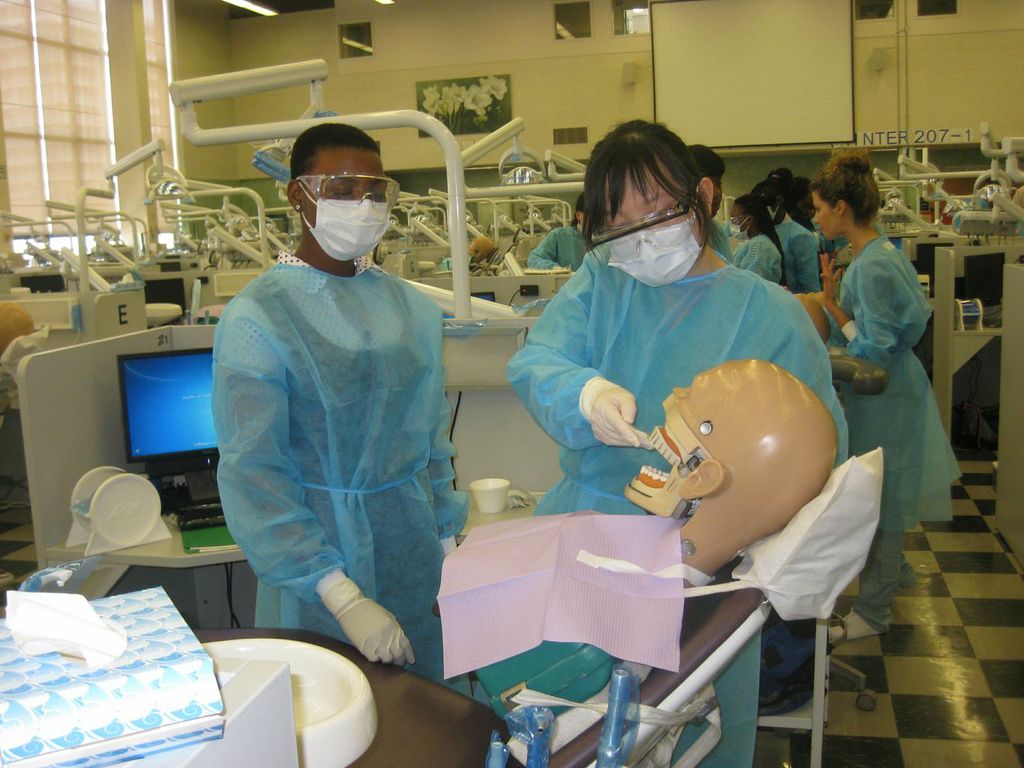Leading Medical Education’s Transformation
University of Toronto Professor Kevin Imrie has been chosen as the President-Elect of the Royal College of Physicians and Surgeons of Canada — the organization responsible for accrediting residency programs and certifying medical specialists in Canada. He is the Physician-in-Chief of the Department of Medicine at Sunnybrook Health Sciences Centre and Vice-Chair of Education in U of T’s Department of Medicine and undertook his new responsibilities October 18.
The vision of the Royal College, Imrie says, “…is ‘the best health for all. The best care for all’ through effective training and high standards for our medical specialists.” More recently, the Royal College has become known as a stronger voice for change, including actively contributing and leading to debates about issues that are critical to residents.
In his new role, Imrie will work with Royal College President Dr. Cecil H. Rorabeck and CEO Dr. Andrew Padmos to oversee a transformation in specialty medical education.
“The model for medical education in Canada is over a hundred years old,” says Imrie. “It’s rooted in a time-based approach; we identified a set time for studying a particular specialty and after that time, you were generally considered qualified. Our goal now is to move to a competency-based model that sets out the core understandings and skills a doctor must have in each specialty. That allows for training that is more learner-centered, better designed to address societal health needs and patient outcomes.”
This approach — known as ‘Competence by Design (CBD)’ — will allow doctors to proceed at a pace that best meets individual learning needs, Imrie explains, while also providing more flexibility in recognizing foreign training. The first phase of the project 'CanMEDS 2015' will establish the framework for this new system and is already underway. CBD is a multi-year initiative that focuses on the learning continuum from residency to retirement.
The shift to competency-based medical education is not unique to Canada, though the work of the Royal College has quickly established Canada as a leader in the field.
“Canada has a strong reputation for the high quality of our medical education and through our engagement with 26 different counties, we are in a position to be an example to the world,” Imrie states.
Imrie has served in a variety of educational leadership positions, including as the Vice President of Education for the Royal College, Associate Dean of the Faculty of Medicine for Admissions and Evaluation, Director of Postgraduate Programs in the Department of Medicine, as well as Core Internal Medicine Program Director and Hematology Training Program Director. An award winning educator, Imrie is the recipient of the Faculty of Medicine Award for Excellence in Postgraduate Medicine Education and the Department of Medicine’s Teacher of the Year Award.
The opportunity to help reinvent medical education drew Imrie to this role.
“This is truly a transformative time in medical education and the chance to be involved and help give it shape was too good to pass up,” he says.
Imrie says there are challenges too. A recent report by the Royal College explored the growing number of medical specialists who are unable to find work.
“While there are many areas where we still do not have enough specialists to meet the demands, there are a small number of areas where we are facing a surplus,” says Imrie, noting these can fluctuate over time. Part of the answer, he says, rests in the competency-based training and certification that will provide doctors with greater flexibility to become certified specialists in areas of greatest need.
“We need to allow doctors to adapt their skills to meet our changing needs,” Imrie says.
Launching the competency-based method of training and evaluation will be Imrie’s focus during his leadership, which includes a one-year term as President-Elect, followed by a two-year term as President and a further one year as Immediate Past President. CanMEDS 2015 will launch September 2015.

Optimize this page for search engines by customizing the Meta Title and Meta Description fields.
Use the Google Search Result Preview Tool to test different content ideas.

Select a Meta Image to tell a social media platform what image to use when sharing.
If blank, different social platforms like LinkedIn will randomly select an image on the page to appear on shared posts.
Posts with images generally perform better on social media so it is worth selecting an engaging image.
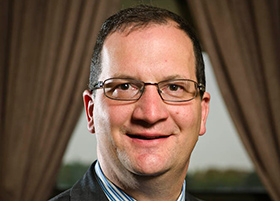
U of T report says 3.9 million Canadians struggle to afford food
 A new report by researchers at the University of Toronto shows that almost four million Canadians are struggling to put the food they need on the table because of food insecurity.
A new report by researchers at the University of Toronto shows that almost four million Canadians are struggling to put the food they need on the table because of food insecurity.
The report, which examined the state of food insecurity in Canada, states that 3.9 million Canadians struggled to afford enough food in 2011, an increase of close to half a million compared with 2008. Of those, 1.1 million were children.
Food insecurity is the inadequate or insecure access to nutritious, healthy food because of financial constraints. For those impacted, the consequences can include physical and emotional hardships, as well as the associated compromises to their health and well-being.
The report was prepared by PROOF, a Canadian Institutes of Health Research (CIHR)-funded research program initiated to identify effective policy interventions to address household food insecurity. The project was led by Dr. Valerie Tarasuk, a nutritional sciences professor at U of T’s Faculty of Medicine, who says the findings should be a wakeup call for government.
“The impact of this situation on children, families, communities, the health care system and our economy cannot be overstated,” says Tarasuk, Principal Investigator for PROOF, an international team of researchers committed to the reduction of household food insecurity. “The problem is not under control and more effective responses are urgently needed. The cost of inaction is simply too high.”
Some key points from the report include:
- Nearly one in eight Canadian households experienced food insecurity in 2011. With the exception of Newfoundland and Labrador, food insecurity has persisted or grown in every province and territory since 2005.
- One in six children in Canada lived in a household affected by food insecurity in 2011.
- Nunavut, Prince Edward Island and New Brunswick had the highest prevalence of children living in food insecure households at 57%, 27% and 25% respectively.
- Until now, the main window into the problem of food insecurity has been food bank utilization statistics. However, the report’s findings show that extent and distribution of food insecurity is far greater than food bank use indicates.
Future PROOF work will explore data on the linkages between the incidence of food insecurity and trajectory of chronic disease, as well as the long-term impact on child development.
“Our findings uncover the harsh reality of inadequate access to food. PROOF will continue to gather detailed information on the nature, extent, and human and economic cost of food insecurity. By arming ourselves with the right data, we will be able to develop achievable solutions to ensure the health and well-being of all Canadians,” says Tarasuk.
The report, released today, is available here.

Optimize this page for search engines by customizing the Meta Title and Meta Description fields.
Use the Google Search Result Preview Tool to test different content ideas.

Select a Meta Image to tell a social media platform what image to use when sharing.
If blank, different social platforms like LinkedIn will randomly select an image on the page to appear on shared posts.
Posts with images generally perform better on social media so it is worth selecting an engaging image.
Suniya Kukaswadia
New Book Tells the Remarkable Story of Medicine at U of T
The history of the University of Toronto’s medical school has been captured for the first time. The book tells the story of the Faculty of Medicine, from its start as a small school for training local doctors to an international force in health research and education.
The book — Partnership for Excellence: Medicine at the University of Toronto and Academic Hospitals — details the context, people and decisions that led to discoveries such as insulin and stem cells and the Faculty’s role as one of the world’s top schools for health professionals.
“The story of our Faculty is an extraordinary one, replete with narrative about incredibly dedicated individuals of enormous talent, inspired innovations and pivotal turning points,” said Catharine Whiteside, Dean of the Faculty. “This work of scholarship documents our history with passion, precision and great insight.”
Historian Edward Shorter, who wrote the book, is the Hannah Professor of the History of Medicine at U of T. He has written about such subjects as psychosomatic illness, psychiatry and the doctor-patient relationship since he came to Toronto from Harvard in 1967.
“This was a tremendous untold story,” said Shorter. He says he felt compelled to tell the story after learning that many of his medical students didn’t know that U of T researchers discovered stem cells.
“It’s important for future generations of students to know they are present in one of the world’s great faculties of medicine.”
The Faculty owes much of its success to an unusual convergence of historical factors, Shorter writes. From the earliest days, young Canadian clinicians and investigators pursued postgraduate study in Great Britain. Many figures from medical schools in Edinburgh and London came here, too. And when the Faculty adopted the research-intensive model used in many U.S. medical schools, visionary Faculty leaders secured the infrastructure and funding for world-class research.
“We were doubly favoured,” said Shorter. British science and U.S.-style resources enabled U of T to ascend to a position of international prominence in medicine.”
The book was four years in the making. The story is long, spanning more than 150 years, but Shorter said the biggest challenge was piecing it together, because many of the University’s academic departments had discarded their departmental papers. “One take-away from the project is that staff should preserve historical records through U of T Archives,” said Shorter.
Partnership for Excellence is published by U of T Press. The University will host a launch for the book on November 4 at 5:30 p.m., in the atrium of U of T’s Donnelly Centre for Cellular and Biomolecular Research, where Professor Shorter will answer questions and sign copies of the book. This event is open to the public. Those planning to attend should R.S.V.P., and can submit questions in advance by tweeting them to @UofTMedicine.

Optimize this page for search engines by customizing the Meta Title and Meta Description fields.
Use the Google Search Result Preview Tool to test different content ideas.

Select a Meta Image to tell a social media platform what image to use when sharing.
If blank, different social platforms like LinkedIn will randomly select an image on the page to appear on shared posts.
Posts with images generally perform better on social media so it is worth selecting an engaging image.
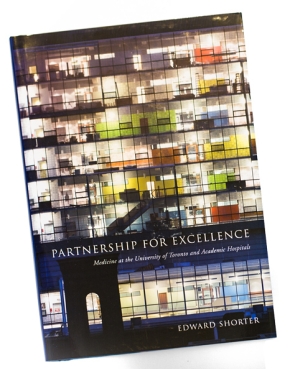
Researcher transformed understanding and treatment of diseases
A towering research leader whose work shed light on how cells communicate, transforming the understanding and treatment of various diseases, has died.
Anthony (Tony) Pawson, one of Canada’s most renowned and revered medical researchers, passed away on Wednesday August 7 at the age of 60.
A University Professor of Medical Genetics at the University of Toronto and Distinguished Investigator at the Lunenfeld-Tanenbaum Research Institute at Mount Sinai Hospital, Pawson was a world leader in the field of signal-transduction. His work provided new understandings on how cells talk to each other. Miscommunications can lead to a range of diseases including cancer and diabetes. The insights gained from Pawson’s research have therefore offered new treatment options for a range of serious conditions.
“Tony’s discoveries broadened our understanding of diseases and their potential treatment. His research was revolutionary and his leadership in signal-transduction was recognized around the world,” said Catharine Whiteside, dean of the Faculty of Medicine.
Pawson was the first Canadian scientist to be named a Kyoto Prize Laureate. A winner of the Wolf Prize in Medicine and the Gairdner Award, he was named to the Order of the Companions of Honour by Her Majesty Queen Elizabeth II, one of only nine Canadians to have been so honoured. He was an officer of the Order of Canada, and a fellow of the Royal Society of London and the Royal Society of Canada. Pawson was widely considered a likely future winner of the Nobel Prize for Medicine.
“As we mourn this loss, we know that the memory of Tony’s extraordinary contributions will serve as an inspiration as we continue to pursue his lifelong work of discovery and making our world a better and healthier place,” said Dr. Jim Woodgett, director of Research for Mount Sinai’s Lunenfeld-Tanenbaum Research Institute.
Born in England, Professor Pawson studied at Winchester College and the University of Cambridge before completing his doctorate at King's College London. Following postdoctoral work at the University of California, Berkeley, he was assistant professor at the University of British Columbia prior to joining the University of Toronto and Mount Sinai Hospital in 1985. He is a world leader and one of the top 25 cited scientists in his field, having authored more than 400 scholarly publications.
“Tony Pawson was a phenomenally gifted researcher and a delightful colleague, and his passing marks a very sad and large loss to our academic community and to global bioscience,” said David Naylor, president of the University of Toronto. “On behalf of the University, I extend sympathies to Tony’s family, his laboratory team, and his many friends and collaborators here in Toronto and around the world.”
Joseph Mapa, president and chief executive officer of Mount Sinai Hospital, said: “All of us here at Mount Sinai felt privileged to work with Tony. The international response from scientific leaders expressing their condolences is a testament to his profound legacy, which continues to impact patient care.”
A service for Pawson's family and friends to meet and share memories will be held on the evening of Friday, August 23. This will be held from 6 p.m. until 9 p.m. at Turner and Porter (2357 Bloor Street West, Toronto, ON M6S 1P4). The following day, August 24, a service will be held at 11 a.m. at Runnymede United Church (432 Runnymede Road, Toronto, ON M6S 2Y8). Tony’s friends and colleagues are welcome on both occasions. An additional tribute to Pawson is being organized by his colleagues at the Lunenfeld-Tanenbaum Research Institute for the afternoon of August 26. Contact Jim Woodgett for more information.
In Pawson’s honour, University of Toronto flag will be lowered on all three campuses on Friday August 23. Also, the Dr. Tony Pawson Memorial Fund for the Lunenfeld-Tanenbaum Research Institute has been established at Mount Sinai. To make a contribution, call 416-586-8203 or click here.

Optimize this page for search engines by customizing the Meta Title and Meta Description fields.
Use the Google Search Result Preview Tool to test different content ideas.

Select a Meta Image to tell a social media platform what image to use when sharing.
If blank, different social platforms like LinkedIn will randomly select an image on the page to appear on shared posts.
Posts with images generally perform better on social media so it is worth selecting an engaging image.
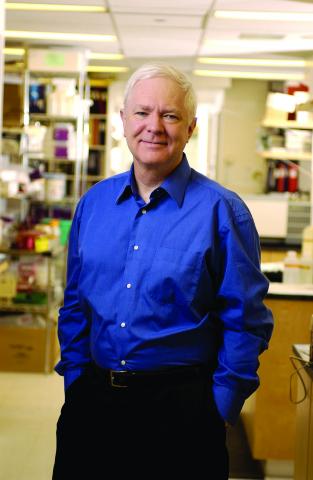
A doctor who changed end-of-life care in Canada
A physician and professor who devoted his life to easing the suffering of dying patients and their families, has died.
Lawrence (Larry) Librach passed away on August 15 from complications of pancreatic cancer. He was 67.
Librach was the founder of Mount Sinai Hospital’s Temmy Latner Centre for Palliative Care and a former Director of the Joint Centre for Bioethics at U of T. His work in palliative medicine led to major improvements in how health professionals care for dying patients across Canada.
“Dr. Librach was a compassionate physician, an education leader and international scholar in the field of palliative care. His innovative work broadened the choices available to patients facing terminal illness, and greatly improved quality of life for them and their families,” said Catharine Whiteside, Dean of U of T’s Faculty of Medicine.
As the physician leader of a national project called Educating Future Physicians for Palliative and End-of-Life Care, Librach helped introduce curriculum in end-of-life care to Canada’s medical schools. He also authored an educational pain manual — distributed in over 150,000 copies — and co-edited an influential textbook, Palliative Care: Core Skills and Clinical Competencies, which is into its second edition.
“Larry was a national and international leader in palliative care education,” said Lynn Wilson, Chair of the Department of Family and Community Medicine where Librach held an appointment as professor. “We will dearly miss his intellect, warmth and wonderful sense of humour.”
Librach received many regional, national, and international awards for his work in palliative care and pain control. These include the Canadian Hospice Palliative Care Association’s Balfour Mount Champion Award earlier this year, and the Queen Elizabeth II Diamond Jubilee Medal in 2012. In 2010, the Instituto Brasiliero de Controle do Câncer named a palliative care unit in his honour.
Librach was Chief of the Department of Family and Community Medicine at Toronto Western Hospital from 1982 to 1988. In 1988, he became an active staff member at Mount Sinai Hospital, where he served as the Director of the Temmy Latner Centre for Palliative Care for 22 years. He was the W. Gifford-Jones Professor in Pain Control and Palliative Care at the University of Toronto from 1999 to 2011.
In an interview with the Canadian Partnership Against Cancer earlier this year, Librach was characteristically compassionate: “My journey will be a lot shorter than I thought it would be, but I’m approaching it with the sense that I need to help my family cope during this time, that I need to cope during this time, and that I need to make sure others understand that basic need that’s been driving me for all my professional career: the person-centred perspective.”
Funeral and Shiva information is available on the Benjamin’s Park Memorial Chapel website. Donations can be made online to the Larry Librach Chair in Palliative Care. In his memory, the University of Toronto flag will be lowered on all three campuses on Thursday August 22 in his honour.

Optimize this page for search engines by customizing the Meta Title and Meta Description fields.
Use the Google Search Result Preview Tool to test different content ideas.

Select a Meta Image to tell a social media platform what image to use when sharing.
If blank, different social platforms like LinkedIn will randomly select an image on the page to appear on shared posts.
Posts with images generally perform better on social media so it is worth selecting an engaging image.
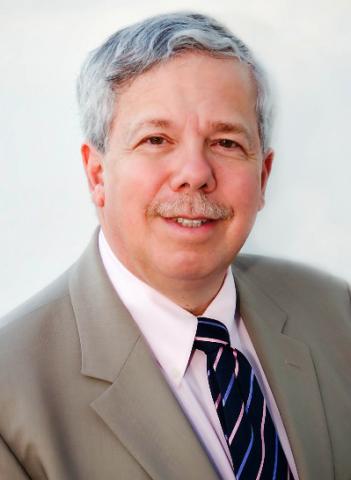
Chinese philanthropist commits to Faculty of Medicine student support
Catharine Whiteside, Dean of the Faculty of Medicine at the University of Toronto, announced a commitment by Zhang Bin, chairman of Chinese media network Millennium Golden Eagle International, to support U of T medical students in honour of the legacy of Norman Bethune, a Faculty of Medicine graduate known for his medical service during the Second Sino-Japanese War.
“Dr. Bethune showed dedication to community service and innovation,” said Dean Whiteside, Vice-Provost of Relations with Health Care Institutions. “Through Mr. Zhang’s commitment we are encouraging our students to exemplify Dr. Bethune’s characteristics in their educational pursuits and professional lives.”
As an international champion of art and culture, Zhang recognizes the need to cultivate skills and advanced learning. His support underscores the Faculty’s commitment to excellence in education as outlined in its campaign, which is part of the University of Toronto Boundless campaign.
Bethune is a well-known symbol of U of T’s long relationship with China. A graduate of the Faculty of Medicine, Bethune travelled to China in 1938 where he operated on war casualties and trained Chinese doctors and paramedics. After Bethune’s death in 1939, Chairman Mao Zedong wrote “In Memory of Norman Bethune,” in which he praised the doctor for his dedication to the Chinese people.
To commemorate the 75th anniversary of Bethune’s arrival in China, the Faculty will host a series of events starting this fall with an alumni event to honour the legacy of Norman Bethune at the Beijing Four Seasons on November 22, 2013.

Optimize this page for search engines by customizing the Meta Title and Meta Description fields.
Use the Google Search Result Preview Tool to test different content ideas.

Select a Meta Image to tell a social media platform what image to use when sharing.
If blank, different social platforms like LinkedIn will randomly select an image on the page to appear on shared posts.
Posts with images generally perform better on social media so it is worth selecting an engaging image.
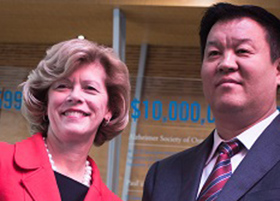
Hundreds of students to benefit from $6.6 million in training funds
Hundreds of U of T students and postdoctoral fellows will benefit from $6.6 million in funding from the Natural Sciences and Engineering Council’s CREATE program, which trains the next generation of researchers to tackle Canada’s most pressing scientific challenges.
The CREATE (Collaborative Research and Training Experience) program aims to improve the mentoring and training environment by improving communication, collaboration and professional skills, as well as providing experience relevant to both academic and non-academic research environments.
Four successful projects will receive $1.65 million each over six years. Together, the projects will offer the equivalent of 398 student-years of training (some students will train for more than one year, so the actual number of students will be smaller).
“Collaborative Medicinal Chemistry Network in Epigenetics Training (ChemNET): Training Canadian Chemists Within a Global Open Access Public-Private Partnership,” directed by Professor Aled Edwards of the Banting and Best Department of Medical Research, will train students in medicinal chemistry.
The students will work within an open access international research collaboration involving four Canadian universities, the Structural Genomics Consortium and the research labs of Pfizer, Novartis and GSK. Trainees will generate research tools to study the science of epigenetics, a fundamental gene regulatory mechanism that influences diseases such as cancer, depression and diabetes as well as bioenergy, livestock science and agriculture. They will spend time in university research environments and in the labs of pharmaceutical companies and attend a “bootcamp” where they will learn specialized techniques in drug design.
The chemical tools generated will be made available to all researchers without restrictions on use.
“Manufacturing, Materials and Mimetics (M3),” directed by Professor Molly Shoichet of the Departments of Chemistry and Chemical Engineering & Applied Chemistry and the Institute of Biomaterials & Biomedical Engineering, is based on the ideas that the next generation of cellular therapeutics will depend on engineering and manufacturing cell-based products and that the global market for regenerative medicine is large and growing.
The project will provide students with the breadth and depth they will need for success in industry. Students will acquire hard skills by working in labs of researchers working in cell manufacturing, biomaterials and tissue mimetics. Experiential skills will come from internships in industry where they will work on product development, intellectual property or regulatory affairs. Finally, they’ll gain skills by taking courses in leadership and communications. Partners are leading Canadian companies.
Two other projects at U of T, “Taming the Lost Heat: Training and Research in Thermoelectrics,” directed by Professor Kenneth Burch of the Department of Physics and
“The Program in Clean Combustion Engines,” directed by Professor Murray Thomson of the Department of Mechanical and Industrial Engineering, have also earned grants from the CREATE program.
“Congratulations to the project directors, co-investigators and to the hundreds of students and postdoctoral researchers who will come together on these exciting projects,” said Professor Paul Young, U of T’s vice-president (research and innovation). “The CREATE program is important not only for our students, but for Canada. By training the students who will be the next generation of leaders in industry and academia, NSERC is investing in Canada’s future. It is these students who will tackle some of our most pressing problems, ranging from energy to health care. I look forward to seeing what they accomplish in the coming years.”

Optimize this page for search engines by customizing the Meta Title and Meta Description fields.
Use the Google Search Result Preview Tool to test different content ideas.

Select a Meta Image to tell a social media platform what image to use when sharing.
If blank, different social platforms like LinkedIn will randomly select an image on the page to appear on shared posts.
Posts with images generally perform better on social media so it is worth selecting an engaging image.
Jenny Hall
EarthTones 2013: Music for Charity
TORONTO — “What kinda life are you looking for / When you stumble back to my door / And you pick it up off of the floor / And you feed me a line that says you adore it all?”
So sings Sarah Kenvyn in “Love Again,” a track from her debut disc, “This is the Sea.” Kenvyn plays guitar, piano, saxophone, cello and flute on the album, which she wrote and recorded in her home studio, when she wasn’t studying or running her carbon-neutral web-design business.
Kenvyn is a fourth-year University of Toronto student who studies neuroscience in the Human Biology Program, and she will take the stage with her band The Indecision on November 9, in the 13th annual EarthTones. The show is a benefit concert for children’s charities, and features performances by over a dozen multitalented U of T students and faculty members.
“EarthTones is a wonderful opportunity to discover the musical talents of students and faculty from across the University,” says Jeremy Zung, a second-year medical student who was inspired to help coordinate this year’s event after attending the show in 2011. “The musicianship of the performers, the range of styles — and the fact that many of the songs are heartfelt originals — make it a really interesting evening,” says Zung.
This year’s event will feature pop, rock, barbershop, guitar instrumental and classical, among others styles. The Faculty of Medicine and the U of T International Health Program will sponsor the show, which happens in Victoria College’s award-winning 500-seat Isabel Bader Theatre.
Proceeds from the event will benefit two registered Canadian Charities. The first, Save a Child’s Heart, provides life-saving heart surgery and follow-up care for children from low-income countries. Since 1995, the organization has also trained over 50 physicians and nurses, and repaired cardiac defects in over 3,200 children.
The second charity, Bringing About Better Understanding, helps improve health in Nepal through preventative and curative medicine, empowering the public and health professionals through knowledge and equipment donation.
Laura Stratton was one of 11 second-year medical students who spent six weeks in Nepal this summer with Bringing About Better Understanding. The group helped collect data and improve screening at the new International Friendship Children’s Hospital Nutrition Centre, which provides nutritional and educational support for malnourished children and their families.
“Despite the centre’s limited funding and resources, we saw real improvements in the health of patients, due to the dedicated and passionate staff. I am so excited that EarthTones will be able to help support them,” says Stratton.
Stratton will attend EarthTones as an audience member. Tickets are $20 for general admission, and $10 for students (with a valid student ID) and seniors.

Optimize this page for search engines by customizing the Meta Title and Meta Description fields.
Use the Google Search Result Preview Tool to test different content ideas.

Select a Meta Image to tell a social media platform what image to use when sharing.
If blank, different social platforms like LinkedIn will randomly select an image on the page to appear on shared posts.
Posts with images generally perform better on social media so it is worth selecting an engaging image.
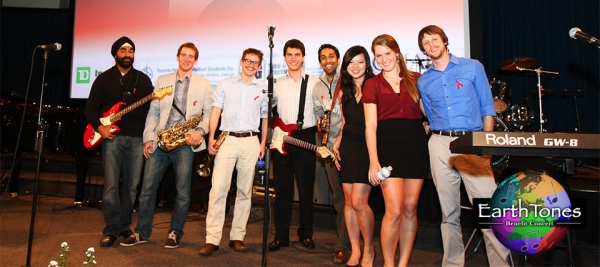
New study redefines how plaques grow in heart disease
The growth of deadly plaque inside the walls of arteries may not happen as scientists believed, research from the University of Toronto and Massachusetts General Hospital has found.
The research also suggests a new potential target in the treatment of atherosclerosis, a leading cause of cardiovascular disease and death globally.
The research team found that macrophages, white blood cells that drive atherosclerosis, replicate inside plaques. Moreover, this growth is not reliant on cells outside the plaques called monocytes, as scientists had assumed.
“Until now, the thinking was that inflammatory macrophages arise mainly from the recruitment of their precursors — monocytes — from the bloodstream,” said Clint Robbins, lead author on the study and an Assistant Professor in U of T’s Departments of Laboratory Medicine and Pathobiology, and Immunology. “Our study shows that the accumulation of macrophages also depends on their proliferation locally within the developing plaque.”
The journal Nature Medicine published the study results today.
The impact of the research on clinical treatments could be large. Many pharmaceutical companies are pouring resources into potential therapies that can block the recruitment of white blood cells into plaques. But if macrophages self-sustain through local cell division, blocking recruitment may not be the best strategy.
"I think this work will force some major re-evaluations," said Filip Swirski, the study’s principal investigator who is a scientist in the Center for Systems Biology at Massachusetts General Hospital and an Assistant Professor at Harvard Medical School. "People have been thinking of targeting monocyte influx to treat atherosclerosis, but they need to consider macrophage proliferation as an additional or alternative approach, especially in established disease.”
That approach might be better than targeting circulating monocytes, since interrupting disease-causing processes within plaques could spare other beneficial immune responses that monocytes control, said Swirski.
As well, it could help improve the current standard of care in treating atherosclerosis: statin therapy. Statins, in addition to lowering blood lipids that contribute to plaque, have anti-inflammatory properties. The researchers are now looking at whether statins might limit the spread of macrophages within plaques.
“Additional targeting of macrophage proliferation may further decrease inflammation in atherosclerosis and prove clinically advantageous,” said Robbins, who is also a scientist in the Toronto General Research Institute at University Health Network.
The researchers conducted their study in mice, and they caution that much more research is needed to see how the work will translate to humans. But encouragingly, they found evidence of macrophage growth in plaques from human carotid arteries.
Next, the team will compare macrophage proliferation to monocyte recruitment during different stages of atherosclerosis, and look at whether all macrophages, or only subsets, replicate.
The study was funded by the U.S. National Institutes of Health, the Massachusetts General Hospital, the Heart and Stroke Richard Lewar Centre of Excellence in Cardiovascular Research, and the Department of Laboratory Medicine and Pathobiology at the University of Toronto.
This news release was partly adapted from a Massachusetts General Hospital release by Sue McGreevey.

Optimize this page for search engines by customizing the Meta Title and Meta Description fields.
Use the Google Search Result Preview Tool to test different content ideas.

Select a Meta Image to tell a social media platform what image to use when sharing.
If blank, different social platforms like LinkedIn will randomly select an image on the page to appear on shared posts.
Posts with images generally perform better on social media so it is worth selecting an engaging image.
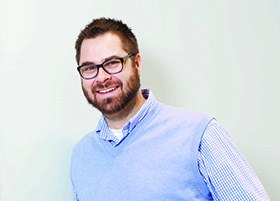
Summer Mentorship Program Inspires Future Generation of Health Professionals
Trey Robinson is going places. The charming, confident high school senior is eager to help others, and through this year’s Summer Mentorship Program, he’s discovering how a career in health can help him do just that..
An honour roll student, Robinson is one of 48 high school students participating in the 2013 Summer Mentorship Program (SMP), an outreach initiative run by the Faculty of Medicine’s Office of Health Professions Student Affairs. Now in its 19th year, the program provides students from traditionally underrepresented communities with the opportunity to discover careers in health professions — including medicine, social work, pharmacy, dentistry, and nursing — by pairing them with current U of T students, faculty and staff.
“My guidance counsellor suggested I apply to the Summer Mentorship Program, and I’m very happy I did. I’m exploring different career paths, networking with health professionals and discovering new opportunities. The other day we made dental moulds. I couldn’t do that in high school,” says Robinson.
Over 600 students have graduated from the Summer Mentorship Program since it first began in 1994. Of the 238 SMP alumni that were sampled in a recent survey, 96 per cent have completed or are pursuing at least one university degree. Just over 80 alumni are pursuing a professional program in the health sciences, with 22 of them having completed or working towards a medical degree.
“SMP speaks to the Faculty’s mission of social responsibility and leadership while being a transformative and meaningful experience for so many of the students. We look forward to continuing our relationship with these students after they have completed the program,” says Ike Okafor, Senior Officer, Service Learning and Diversity Outreach Office of Health Professions Student Affairs.
SMP students take part in a variety of health-related activities including dissecting cow eyes, working with cadavers to learn about the body’s various systems and doing hands-on placements in hospital. They also visit the University’s various health-related faculties and departments such as the Faculty of Kinesiology and Physical Education, Physician Assistant Program and Medical Radiation Sciences Program.
Through partnerships established this year, students also participated in placements at TAIBU Community Health Centre—which provides primary health care services to the GTA’s black community — and Anishnawbe Health Toronto, a care centre that works to improve the well-being of Toronto’s Aboriginal population. The program also introduced grants for students from the Aboriginal community — made possible by the Access Empowerment Council — to cover living expenses and transportation to and from Toronto. Sessions on engineering research and the legal implications of health were also added, with support from U of T’s law and engineering faculties.
“The Access Empowerment Council has made a five year pledge — with hopes to continue beyond — to empower Aboriginal youth through the Summer Mentorship Program. They will benefit from this unique opportunity and return to their communities as confident citizens and future ambassadors,” says Diana Alli, President of the Council.
For Robinson, SMP is an opportunity to do what he loves most — learn.
“My SMP mentors have a wealth of knowledge and they’re always willing to share it. It’s very inspiring to see them setting and achieving huge goals such as becoming doctors, dentists or nurses,” says Robinson, who is considering dentistry as a potential career path.
Jessica Lee, another SMP participant, shares Robinson’s sentiments. A recent high school graduate of Aboriginal-Vietnamese decent, Jessica’s experience in the Faculty’s anatomy labs is exactly what she needs before starting her Kinesiology degree in the fall.
“Initially I was a bit freaked out while working with real human body parts, but the things I’ve learned will come in handy during my university studies,” Lee remarks.
The enthusiasm of students like Robinson and Lee inspires Professor Herbert Ho Ping Kong (Department of Medicine) to take SMP participants under his wing. An internist at University Health Network, Ho Ping Kong has been a mentor in the program for over 15 years. He enjoys working with students who complete placements at Toronto Western Hospital.
“It’s really encouraging and remarkable when you see former SMP students who have gone on to medical school and beyond,” he says.

Optimize this page for search engines by customizing the Meta Title and Meta Description fields.
Use the Google Search Result Preview Tool to test different content ideas.

Select a Meta Image to tell a social media platform what image to use when sharing.
If blank, different social platforms like LinkedIn will randomly select an image on the page to appear on shared posts.
Posts with images generally perform better on social media so it is worth selecting an engaging image.
